The rise of the HAIR-LOSS influencers: Meet the balding online stars cashing in on their disappearing locks
Bald is definitely more beautiful for these social media stars.
As more and more people are dealing with hair loss, especially after having the coronavirus or taking the diabetes drug Ozempic, it is no longer a taboo topic online.
Now, influencers are cashing in on their disappearing locks by creating videos documenting their hair loss journey and endorsing products meant to bring back hair in an effort to destigmatize baldness.
FEMAIL spoke to hair loss doctors and influencers to find out what the response to disclosing their hair loss is and which products and techniques really work.
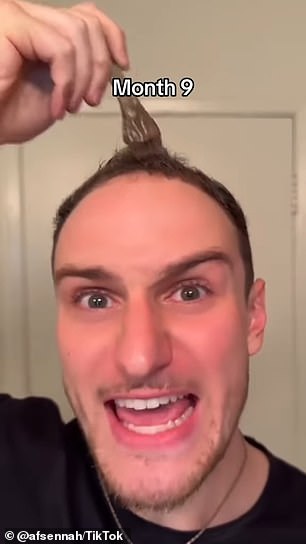
Twitch star Zeph Sanders started losing his hair at age 20 and wore a beanie to disguise his balding
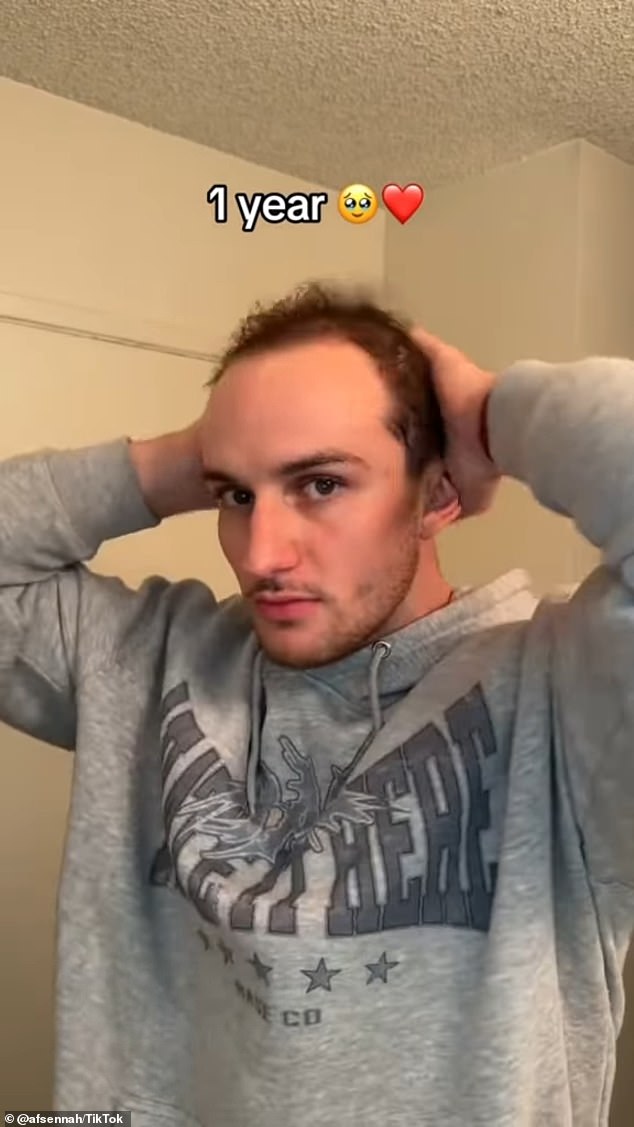
Zeph told The New York Times that he earns up to $7,000 a month for his hair loss
Twitch star Zef Sanders started losing his hair at the age of 20 and wore a hat almost every day and in most of the videos he made to conceal his baldness.
Now, seven years later, Zeph is known for the “hair journey” he documents for his 750,000 TikTok followers, which includes everything from cracking an egg on his head to trying PRP, which involves drawing a person’s blood and then injected to stimulate the skin. new hair growth.
Zeph told The New York Times that he makes up to $7,000 a month for his hair loss content, and maintains an Amazon store and link tree of available products.
“I ended up showing my hair after a video of me went viral, with many people commenting on my hairline and calling me out for covering it up,” Zeph told DailyMail.com. He gave a “hairline warning” before taking off his beanie, which became his unofficial catchphrase.
‘I got a lot of mixed reactions. Some people were really supportive of my vulnerability, but there was also a lot of negative internet bullying,” Zeph said. He made a point to respond to the negative comments and explain that they wouldn’t stop him from sharing his regrowth journey.
Despite being open about his hair loss, Zeph believes “there will always be a stigma around baldness.”
Zeph thinks that in the past “there wasn’t much you could do if you went bald, so people just accepted it.” Now he believes there is ‘more awareness around appearance and beauty, which has made treatments more accessible to everyone.’
“I feel like there’s more pressure now to look better and meet beauty standards, especially when you’re in the public eye,” Zeph continued.
He tries to do his part “in erasing the shame that comes with going bald,” while sharing “solutions for those who want to try and grow their hair back and take care of it.”

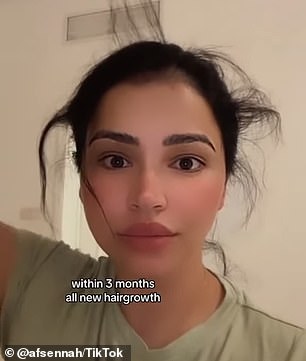
Trichologist Afsennah gained a large social media following for documenting her hair loss journey and creating hair oils and other products to aid in growth
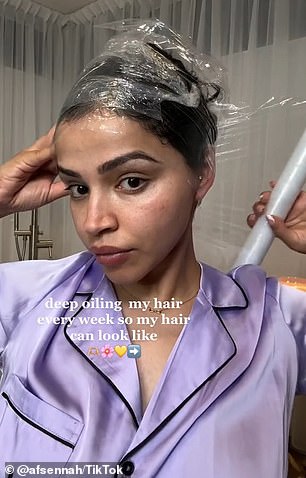
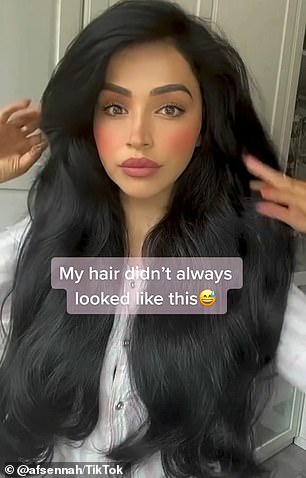
Afsennah was inspired to start her own hair care brand after receiving positive feedback on social media after sharing her own journey
It’s not just men who are getting in on the action against hair loss.
Trichologist Afsenna has amassed more than 481,000 Instagram followers for her hair growth tips, which she also shares with her 838,000 TikTok followers and in more in-depth YouTube tutorials.
Afsennah said she was inspired to start her own hair care brand after receiving positive feedback on social media after sharing her own journey.
As people become increasingly comfortable sharing their hair loss, Afsennah told FEMAIL: “The people who contact me, both clients and followers, often express a sense of sadness over their experiences with hair loss.”
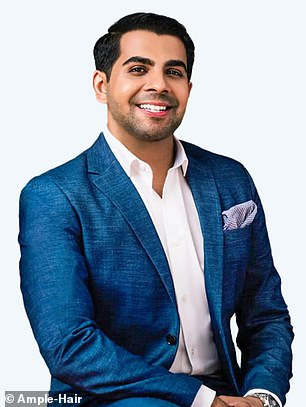
Dr. Hardik Doshi is the lead hair restoration surgeon at the Ample clinic in New York City
“It is clear how deeply it affects their lives, highlighting the importance of healthy hair and scalp,” the trichologist continued.
Dr. Hardik Doshi, the lead hair restoration surgeon at the New York City clinic Extensive told DailyMail.com: ‘In recent years there has been an interesting shift in the conversation around hair loss, with increasing openness and transparency clearly visible, especially on social media platforms.’
“Historically, discussions about hair loss have often been stigmatized, and those who have encountered it may have felt embarrassed or humiliated,” said Dr. Doshi.
“However, modern societal attitudes, as well as the influence of social media, have contributed to a more acceptable climate for expressing these widespread concerns,” the expert continued.
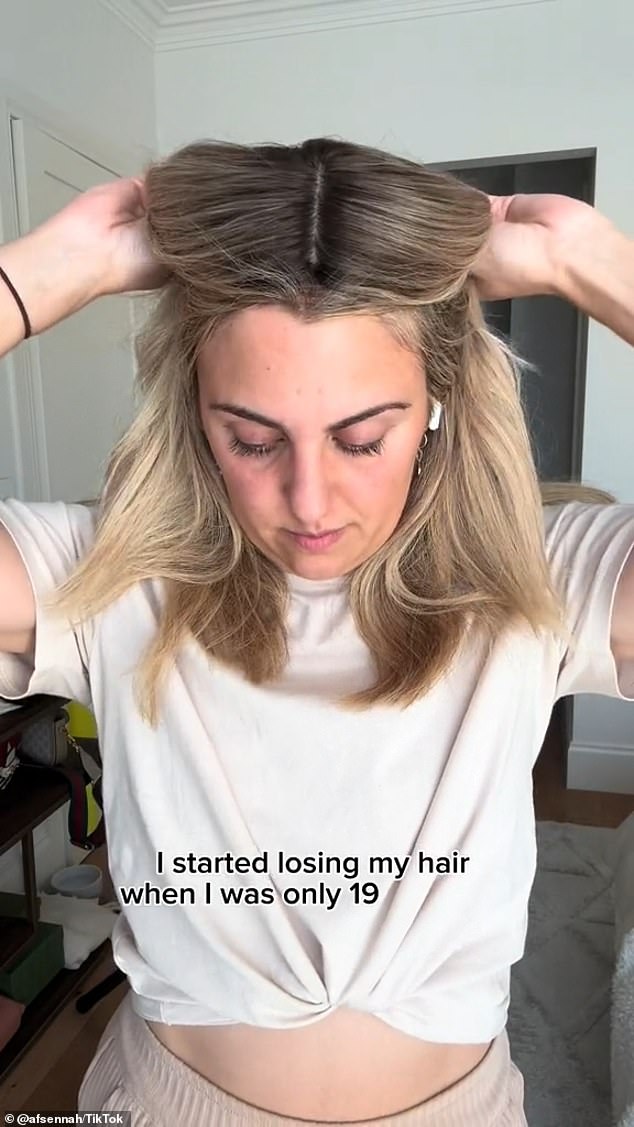
Human hair wigs and toppers company Lusta shares sweet stories on TikTok about children undergoing chemotherapy or women with alopecia
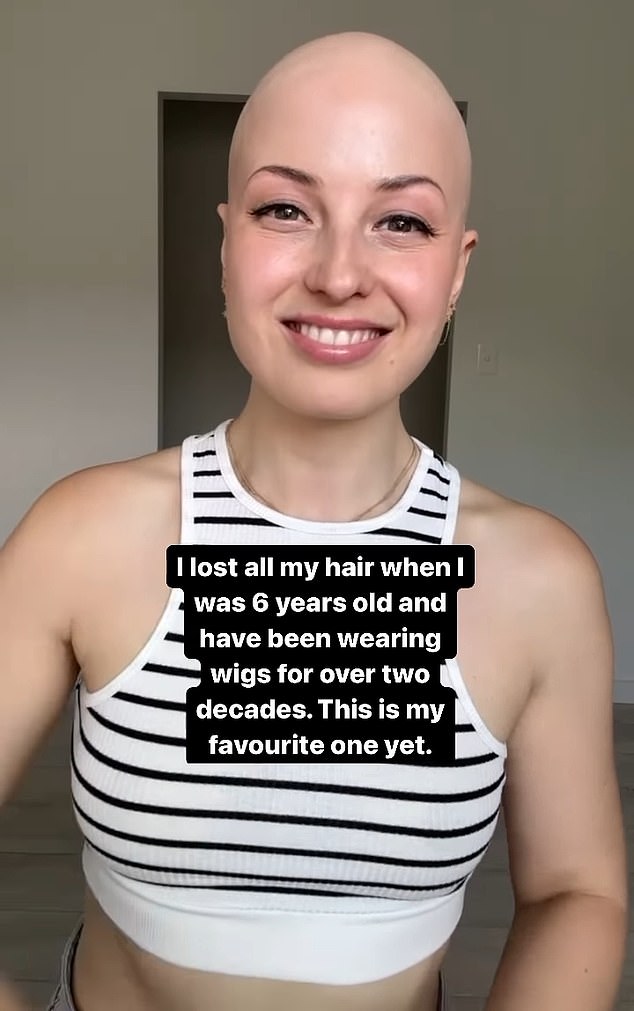
Holly works with Lusta Hair and can often be seen on their social media, sharing her own alopecia journey or helping young women choose the perfect wig
Other hair loss influencers include companies such as the human hair wig and toppers company Lusta hairwhere sweet stories are shared TikTok about children undergoing chemotherapy or women with alopecia.
The company provides them with lifelike hair and makes videos about their experiences, helping them regain their self-confidence.
Often Holly, who works at the company and has alopecia, helps these young women choose the perfect wigs.
Kimberly Di Benedetto, the founder of Lusta Hair in Australia, told DailyMail.com: ‘When I started Lusta Hair, hardly anyone spoke publicly about hair loss. As a woman with hair loss, for almost ten years I thought I was the only one with this experience.’
“The women we chat with are often in the process of losing their hair, which is a very traumatizing experience,” Kimberly, who started losing her hair because alopecia at 19, explained.
Now Kimberly wants to “bring hair loss and wearing hair into the mainstream.”
“Because of the content we publish every day, we have seen an increase in other women and online influencers joining the conversation,” Kimberly said.
